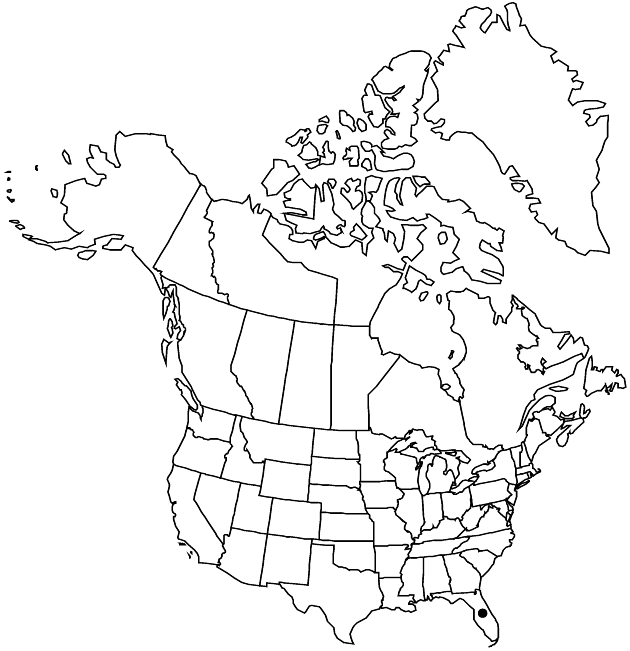Liatris savannensis
Sida 20: 1574, fig. 1. 2003.
Plants (80–) 90–130 cm. Corms globose, irregularly cylindric, narrowly ovoid, or fusiform and caudexlike. Stems glabrous (often sparsely sessile-glandular). Leaves: basal (often withering before flowering), 1-nerved or 3–5-nerved, linear-elliptic, linear-spatulate, or linear-oblanceolate, (170–) 200–400 × 3–10 mm, gradually reduced distally, essentially glabrous, glanddotted (proximal margins pilose-ciliate). Heads in dense, spiciform arrays. Peduncles 0 or (spreading-ascending) 1–2 mm. Involucres turbinate-campanulate, (7–) 8–10 × (8–) 9–11 (–12) mm. Phyllaries in (3–) 4 (–5) series, ovate to oblong, obovate, or spatulate, weakly unequal, essentially glabrous, margins with (pinkish purple) hyaline borders, erose to lacerate, ciliolate, apices broadly rounded. Florets 9–17; corolla-tubes pilose inside. Cypselae ca. 4 mm; pappi: lengths ± equaling corollas, bristles barbellate.
Phenology: Flowering (Aug–)Sep–Oct(–Nov).
Habitat: Sandy pinelands, moist sites dominated by slash pine, sabal palmetto, or mixture of the two
Elevation: 0–30 m
Discussion
Selected References
None.
Lower Taxa
"barbellate" is not a number."fine" is not a number.
